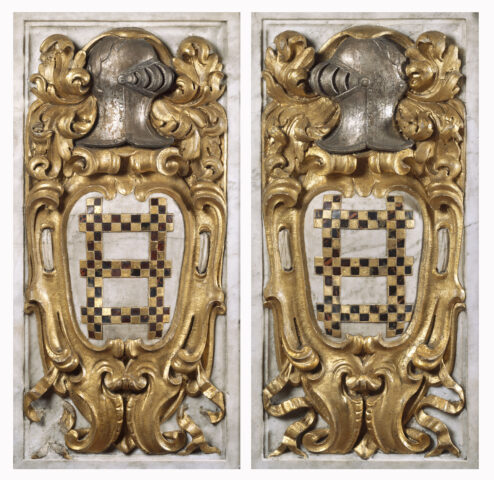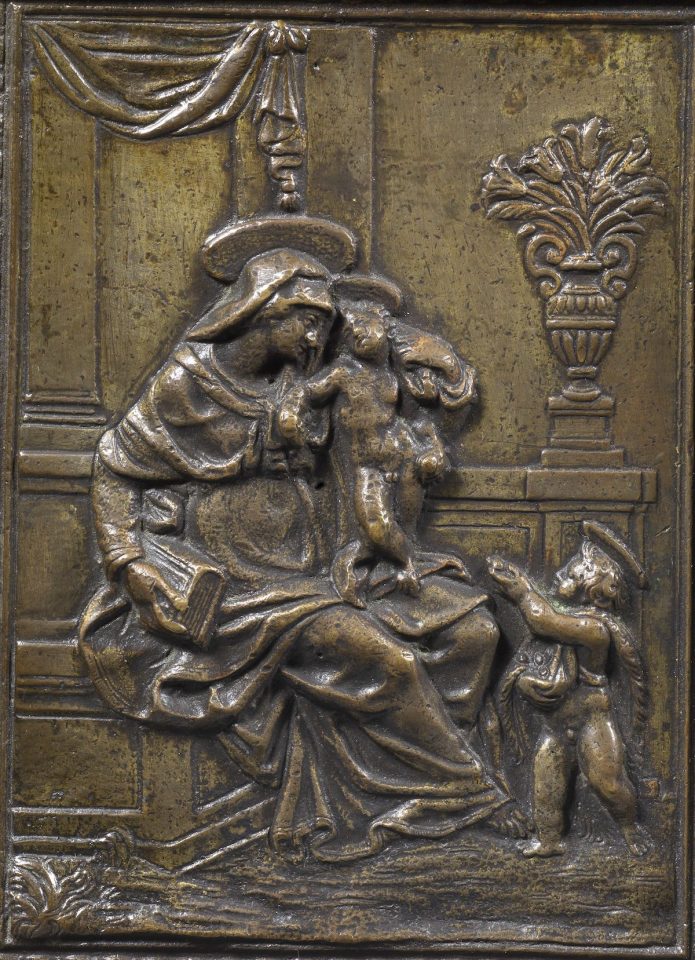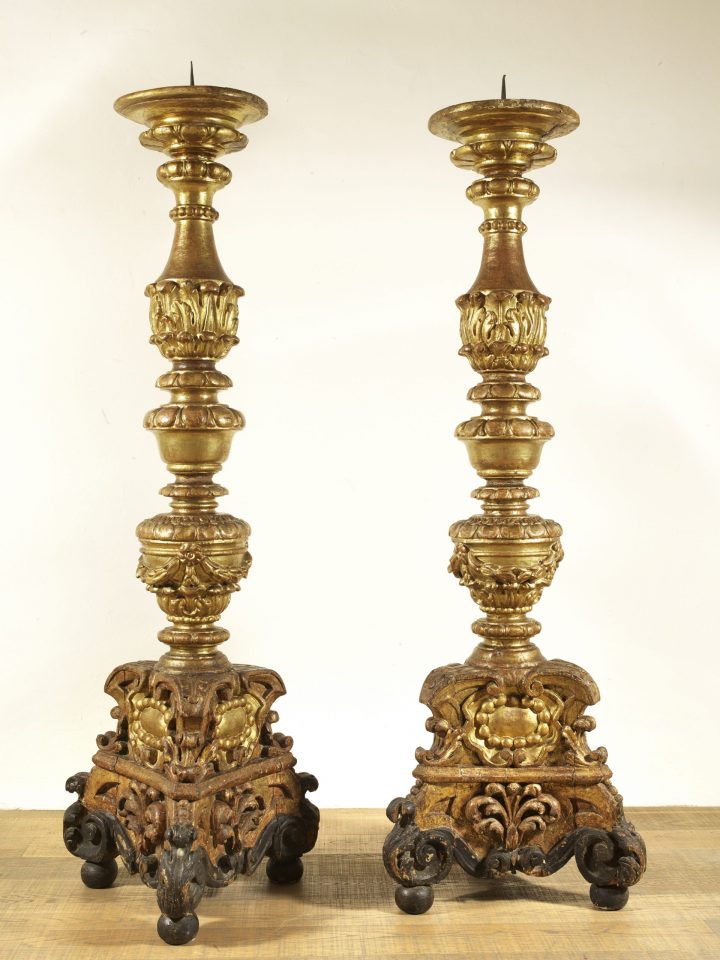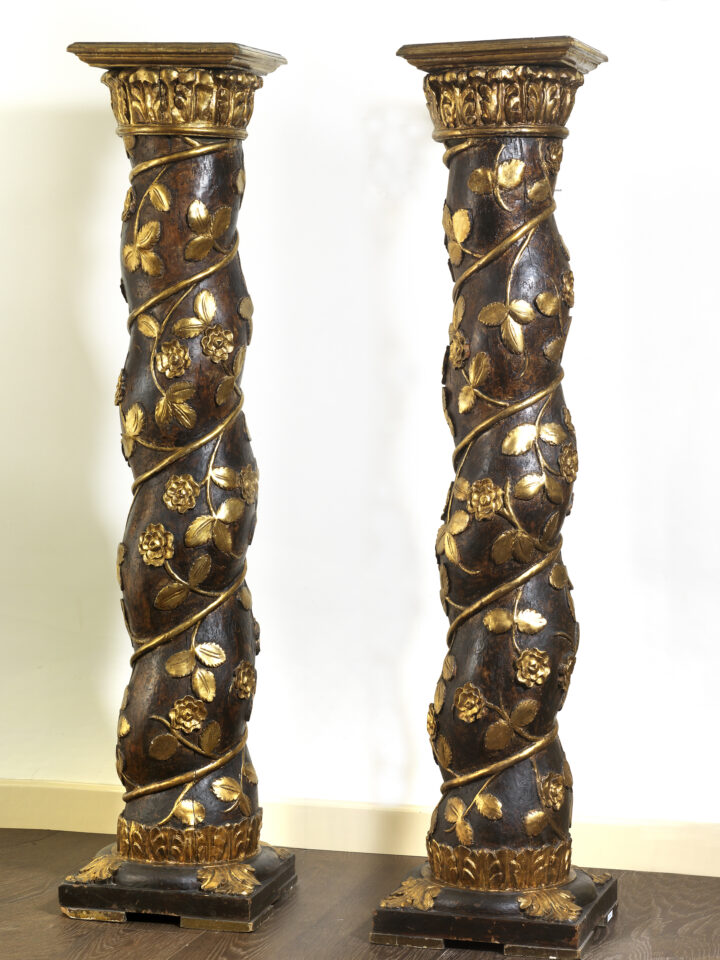FLORENTINE SCULPTOR, based on a drawing by Matteo di Dionigi Nigetti
Florence, first half of 17th century
Pair of coats of arms of the Falconieri family
This significant pair of coats of arms in white marble, of exceptional quality, depicts, in mirror image, the arms of the Falconeri family: “Di rosso, ad una scala di tre gradini scaccati d’argento e d’azzurro” (“Gules, a ladder of three rungs, chequered in silver and azure”)
Originally from Fiesole, the Falconeri family distinguished itself for their political engagement in Florence, where it had resided since the beginning of the 13th century, culminating in the participation of some of its members in the ranks of the Guelphs in the Battle of Montaperti. The preciousness of the two slabs derives not only from the fine relief carving of the marble, but also from the astonishing preservation of the gold, silver, and tortoiseshell inserts.
The dimensions, the rectangular format, and the symmetrical arrangement of the helmets suggest that these marble coats of arms were originally part of the decorative scheme of an altar, bordered by these noble insignia on the sides. The style of the decorations, the treatment of scrolls and ribbons, and the overall refined preciousness are reminiscent of the early 17th-century Florentine artistic milieu. The most authoritative source for attributing these Falconieri arms is a pen drawing, originally from the Convent of the Santissima Annunziata. Since 1610, the architect of the convent had been Matteo di Dionigi Nigetti (Florence 1570-1649), to whom we attribute the design of these coats of arms.
Finally, attention should be drawn to the very refined decorative technique “in the Dutch manner” used in the two Falconieri arms to render the chequered rungs of the ladder. The use of tortoiseshell squares bordered by blue and silver is unusual for such an ancient work, as this technique only spread in Florence in the second half of the 17th century, after Cosimo III de’ Medici’s trip to the Netherlands. It is plausible that Nigetti, intrigued by the novelty of this technique and inclined to artistic experimentation, sought out a Dutch specialist to more effectively characterize the Falconieri arm.





